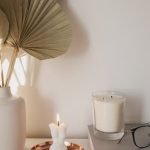Are you looking to learn how to decorate a cake at home? Whether you’re a beginner or looking to improve your skills, mastering the art of cake decorating can be a rewarding and enjoyable experience. From simple designs to intricate creations, there are endless possibilities when it comes to decorating cakes in your own kitchen.
To start on your cake decorating journey, it’s important to have the right tools and ingredients on hand. From pastry bags and piping tips to frosting and fillings, having the essentials will make the process smoother and more enjoyable. With the right foundation and techniques, you can create stunning and delicious cakes that will impress your friends and family.
In this article, we’ll take you through the essential steps of cake decorating at home. From preparing the cake base to choosing the perfect frosting and fillings, we’ll cover everything you need to know to get started. Whether you’re interested in basic techniques like piping and spreading or ready to try more advanced methods like fondant and royal icing, we have tips and inspiration to help you become a pro at decorating cakes in no time.
Essential Tools and Ingredients for Cake Decorating at Home
As you embark on your journey to learn how to decorate a cake at home, it’s essential to have the right tools and ingredients at your disposal. Having these items on hand will not only make the decorating process easier but also more enjoyable.
Tools for Cake Decorating
Some of the essential tools for cake decorating include offset spatulas for smooth frosting application, piping bags and tips for creating intricate designs, a turntable for easy maneuvering, a bench scraper for clean edges, and a cake leveller for creating even layers. Other useful tools include a pastry brush for adding simple textures, a cake comb for decorative patterns, and a cake decorating stand to display your masterpiece.
Ingredients for Cake Decorating
In addition to the tools, having the right ingredients is crucial. Some basic ingredients you’ll need include butter or shortening for frosting, confectioners’ sugar for sweetness and texture, vanilla extract or other flavorings, food coloring gels or powders for custom colors, and sprinkles or edible decorations for that extra flair.
Don’t forget to have cake flour or all-purpose flour, baking powder or baking soda, eggs, milk, sugar, and salt on hand to bake your delicious base. Experimenting with different flavors and colors can result in unique and stunning cakes that will impress your friends and family.
Where to Get Supplies
You can find all these tools and ingredients at specialty baking stores, craft stores with baking sections, or online retailers. Investing in quality tools will pay off in the long run as they are durable and will help you achieve professional-looking results when learning how to decorate a cake at home.
With the right tools and ingredients in your arsenal, you’re well on your way to creating beautiful cakes that will be both delightful to look at and delicious to eat.
Preparing the Cake Base
Baking a delicious cake is just the start of your journey to creating a beautifully decorated masterpiece. The way you prepare the cake base can greatly impact the overall outcome of your cake decorating efforts. To ensure success, follow these steps on how to bake and cool your cake before diving into the world of creative decorations:
- Choose the right cake recipe: Whether it’s a classic vanilla sponge or a rich chocolate cake, selecting the perfect recipe is essential for a successful bake.
- Preheat your oven: Make sure your oven is preheated to the correct temperature before placing your cake batter in for baking.
- Use quality bakeware: Invest in good quality baking pans that distribute heat evenly for a perfectly baked cake.
Once your cake is out of the oven, it’s crucial to allow it to cool properly before starting with any decoration. Here are some tips on how to cool your cakes effectively:
- Let the cakes rest in their pans for about 10 minutes after baking to allow them to set.
- Gently run a knife around the edges of the pan before flipping them out onto a wire rack for further cooling.
- For faster cooling, you can place the cakes in the refrigerator for a short while, but make sure they are completely cooled before decorating.
By taking these simple yet crucial steps in preparing your cake base through baking and cooling, you will set yourself up for success when it comes time to decorate. With a solid foundation, you’ll be able to unleash your creativity and create stunning cakes that not only look beautiful but taste delicious too.
Choosing the Right Frosting and Fillings
When it comes to decorating a cake at home, choosing the right frosting and fillings is crucial in creating a delicious and visually appealing dessert. The frosting not only adds flavor but also serves as a canvas for your creativity.
There are various types of frostings to choose from, such as buttercream, cream cheese, ganache, and whipped cream. Each type has its own unique texture and taste, so selecting the right one depends on your personal preference and the overall design of the cake.
Buttercream Frosting
One of the most popular choices for cake decorating is buttercream frosting. It is versatile, easy to work with, and holds its shape well. Buttercream can be flavored in countless ways by adding extracts or fruit purees. To achieve smooth edges on your cake, you can use a spatula or piping bag with different tips for decorative designs.
Fondant and Ganache
For more elaborate designs or special occasions like weddings or birthdays, fondant and ganache are great options. Fondant is a smooth sugar paste that can be rolled out to cover cakes for a clean, professional look. It can also be shaped into figures, flowers, or other intricate decorations. Ganache is made of chocolate and cream, resulting in a rich and glossy finish perfect for decadent cakes.
Fruit Fillings and Compotes
When it comes to filling layers in your cake, fruit fillings and compotes add a burst of flavor and freshness. Whether it’s tangy lemon curd, sweet strawberry jam, or tart raspberry compote, fruit fillings complement various cake flavors beautifully. Layering different fillings between cake rounds can create interesting flavor combinations that will impress your guests.
By carefully selecting the right frosting and fillings for your cake decorating project, you can enhance the taste and appearance of your creation. Experiment with different flavors and techniques to find what works best for you. With practice and patience, you’ll soon master the art of choosing the perfect frosting and fillings to make your cakes truly stand out at home gatherings or special events.
Basic Cake Decorating Techniques
Cake decorating is an enjoyable and creative process that allows you to personalize your cakes for any occasion. Whether you are a beginner or have some experience, mastering basic cake decorating techniques such as piping, spreading, and leveling can take your homemade cakes to the next level. Here are some tips on how to decorate a cake at home using these fundamental techniques:
- Piping: Piping is a classic technique used to create intricate designs, borders, and lettering on cakes. To pipe frosting onto a cake, fill a piping bag with your desired frosting (buttercream or royal icing work well) and choose the appropriate piping tip. Practice on a piece of parchment paper before piping directly onto your cake to get a feel for the pressure needed to create different shapes and designs.
- Spreading: Spreading frosting evenly on a cake is essential for achieving a smooth and professional finish. Use an offset spatula or icing smoother to spread frosting in an even layer over the top and sides of the cake. Start by adding a generous amount of frosting on top of the cake, then gently spread it outwards towards the edges while rotating the cake stand.
- Leveling: Leveling a cake is crucial for creating even layers that stack neatly on top of each other. To level a cake, use a serrated knife or a cake leveler tool to carefully trim off any domed tops or uneven edges. Make sure the layers are flat before stacking them with filling in between.
Mastering these basic techniques will not only help you achieve professional-looking results but also give you the confidence to explore more advanced cake decorating methods in the future. So, get your tools ready, choose your favorite flavors and colors, and start experimenting with different designs to create stunning cakes right in your own kitchen. Show off your creations proudly and enjoy both the process of decorating and the delicious results.
Advanced Cake Decorating Techniques
Cake decorating can elevate a simple dessert into a stunning masterpiece, and advanced techniques like working with fondant, royal icing, and decorative elements can take your creations to the next level. Fondant is a smooth sugar paste that can be rolled out and draped over cakes for a flawless finish.
To use fondant in your cake decorating, start by rolling it out on a clean surface dusted with powdered sugar. Carefully lift the fondant onto your cake using a rolling pin, then gently smooth it over the top and sides to get rid of any air bubbles or wrinkles.
Royal icing is another versatile cake decorating technique that can be used for intricate designs such as piping flowers, intricate patterns, or creating delicate lace details. Made from egg whites or meringue powder and powdered sugar, royal icing dries hard which makes it perfect for detailed work that needs to hold its shape. To decorate your cake with royal icing, transfer it to a piping bag fitted with a fine tip and carefully pipe your design onto the cake.
When it comes to decorative elements for cake decorating, the possibilities are endless. From edible flowers and fresh fruit to chocolate decorations and handmade sugar sculptures, adding unique elements can make your cakes truly stand out.
Don’t be afraid to get creative and experiment with different textures, colors, and shapes to create visually stunning desserts that will impress your friends and family. With the right tools, practice, and creativity, you can master these advanced cake decorating techniques to create beautiful cakes at home.
| Advanced Cake Decorating Techniques | Details |
|---|---|
| Fondant | Sugar paste rolled out for flawless finish |
| Royal Icing | Versatile icing for intricate designs |
| Decorative Elements | Endless possibilities from edible flowers to handmade sugar sculptures |
Tips for Decorating Cakes Like a Pro
When it comes to decorating cakes at home like a pro, there are a few key tips and tricks that can help elevate your baked creations to the next level. One of the most important aspects of cake decorating is to ensure that you have the right tools and ingredients on hand.
Investing in quality piping bags, tips, offset spatulas, and food coloring gels can make a world of difference in achieving professional-looking results. Additionally, having a good selection of fresh fruits, edible flowers, chocolate shavings, and other decorative elements can add flair to your designs.
Another crucial aspect of decorating cakes like a pro is mastering basic cake decorating techniques such as piping, spreading, and leveling. Piping buttercream onto a cake with different tips can create beautiful borders, rosettes, and intricate designs. Using an offset spatula to smoothly spread frosting over the cake’s surface can ensure a clean and even finish. Leveling your cake layers with a serrated knife or cake leveler before stacking can also result in a more professional-looking final product.
For those looking to take their cake decorating skills up a notch, experimenting with advanced techniques like working with fondant, royal icing, and creating decorative elements can add an extra touch of elegance to your cakes. Fondant allows for smooth finishes and intricate designs on cakes while royal icing is perfect for delicate piping work. Adding handmade sugar flowers, gum paste figurines, or edible gold leaf can truly showcase your creativity and attention to detail in cake decoration.
| Cake Decorating Tip | Description |
|---|---|
| Invest in quality tools | Tools such as piping bags, tips, spatulas are essential for professional-looking results. |
| Master basic techniques | Piping buttercream borders & rosettes; Spreading frosting evenly; Leveling cake layers |
| Experiment with advanced techniques | Working with fondant for smooth finishes; Using royal icing for delicate piping; Creating decorative elements like sugar flowers |
Inspiration and Ideas for Creative Cake Decorations
Decorating a cake at home can be a fun and creative process, allowing you to personalize your baked goods for any occasion. Whether you are an experienced baker or just starting out, there are countless ways to decorate a cake that will impress your friends and family. From simple designs to elaborate creations, the possibilities are endless when it comes to decorating cakes at home.
One way to get inspired when decorating a cake is to take a look at different sources such as online tutorials, baking magazines, and social media platforms like Pinterest and Instagram. These resources can provide you with ideas for new techniques, color combinations, and themes that you can incorporate into your own cake designs. You may also find inspiration in nature, art, fashion, or even your favorite hobbies when deciding on how to decorate your cake.
When it comes to creative cake decorations, the only limit is your imagination. From floral arrangements made out of buttercream frosting to intricate piping designs inspired by lace patterns, there are endless ways to make your cakes stand out.
Experimenting with different textures, colors, and shapes can help you create unique and visually appealing cakes that will leave a lasting impression on everyone who sees them. With practice and patience, you can develop your own style and become confident in how to decorate cake at home like a professional baker.
Conclusion
In conclusion, the art of cake decorating is a delightful and rewarding skill that allows you to showcase your creativity in a delicious way. By following the essential tools and ingredients for cake decorating at home, preparing the cake base, choosing the right frosting and fillings, and mastering basic and advanced cake decorating techniques like piping, spreading, fondant, royal icing, and decorative elements, you can create stunning cakes right in your own kitchen.
With the right tips and tricks for decorating cakes like a pro, such as ensuring your cakes are cooled completely before applying frosting or using a turntable for smooth icing application, you can elevate your creations to professional standards. Remember that practice makes perfect when it comes to cake decorating, so don’t be afraid to experiment with different techniques and designs to find what works best for you.
Whether you’re celebrating a special occasion or simply want to indulge in some creative baking therapy, learning how to decorate cakes at home is a wonderful skill that can bring joy to both yourself and those lucky enough to enjoy your beautiful creations. So don’t be afraid to get creative, have fun with your decorations, and most importantly, enjoy the process of bringing your unique cake visions to life.
Frequently Asked Questions
How to Easily Decorate a Cake at Home?
Decorating a cake at home can be made easy by starting with a smooth frosting base, whether it’s buttercream or fondant. Using piping bags with different tips for designs like rosettes, borders, or writing can add visual appeal. Adding edible decorations like sprinkles, edible glitter, or fresh fruit can also enhance the look of the cake.
What Are the 5 Kinds of Cake Decorating?
The five main types of cake decorating include piping, fondant, buttercream, royal icing, and gum paste decorations. Piping involves using a piping bag with various tips to create designs on the cake. Fondant allows for smooth finishes and intricate designs.
Buttercream is versatile and commonly used for decorations like flowers or borders. Royal icing hardens quickly and is often used for intricate detailing. Gum paste is moldable and dries firm for 3D decorations.
What Are the 7 Different Cake Decorating Techniques?
Cake decorating techniques vary widely, but seven common methods include layering cakes to create unique flavors and designs, crumb coating to seal in crumbs before final frosting, piping flowers or borders using different tips for varying effects, stenciling patterns onto cakes for precision design work, using fondant to create smooth finishes or molded shapes, airbrushing for adding color gradients or patterns onto cakes seamlessly, and hand-painting edible designs directly onto the cake surface using food coloring mixed with alcohol or extracts.
Each technique offers its unique touch to cake decoration based on skill level and desired aesthetics.

I’m thrilled to be your companion on this exciting journey through the world of home decor and design. With a passion for turning houses into homes and a keen eye for the finer details, I’m here to help you transform your living spaces into beautiful, functional, and meaningful havens.





